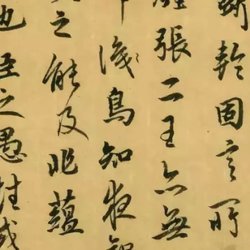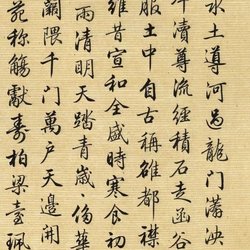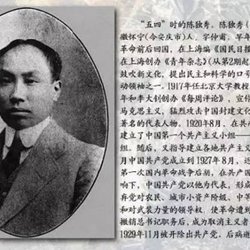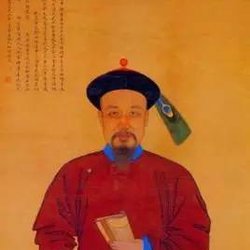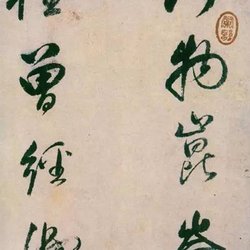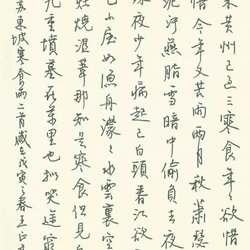Zhong Yao in the Wei Dynasty of the Three Kingdoms,
The regular script he wrote was derived from Han Li.
The brushstrokes are like flying giants playing in the sea, extremely vivid.
Although there is a legacy of official division, regular script has been prepared.
In fact, he is the ancestor of Zhengshu and has a great influence on later generations.
Later, Zhong Yao's best student Wang Xizhi studied the small regular script calligraphy more carefully and perfected it, establishing the standard of Chinese small regular script beauty. During the Wei and Jin Dynasties, there were no calligraphy competitions such as the "Zhong Yao Cup", no calligraphy training classes, and of course no professional calligraphers. People in the Eastern Jin Dynasty wrote regular script without competition for fame and fortune, and without prizes and prizes. It was such aura and tranquility. Let’s enjoy it together:
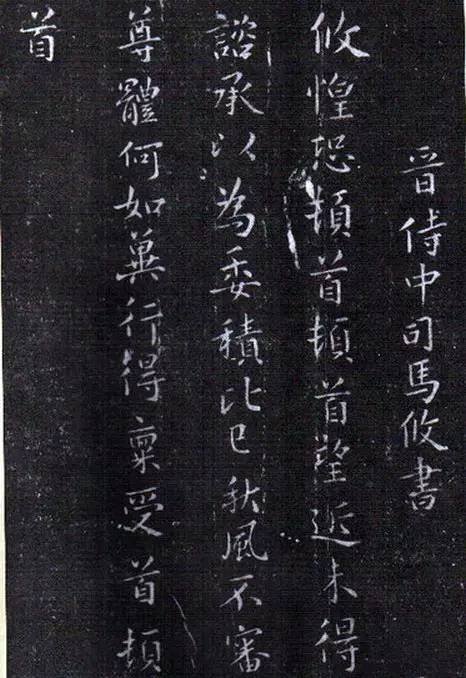
Sima You's "Looking Near"
Sima You (248-283), whose courtesy name was Dayou and whose small name was Taofu. A native of Henan, he was the second son of Emperor Wen of the Jin Dynasty Sima Zhao, the same mother-brother of Emperor Wu of the Jin Dynasty Sima Yan, the father of Sima Jiong, King Min of Qi Dynasty, and his mother was the Queen Wenming Wang Yuanji. He was from the clan of the Western Jin Dynasty and was good at calligraphy.
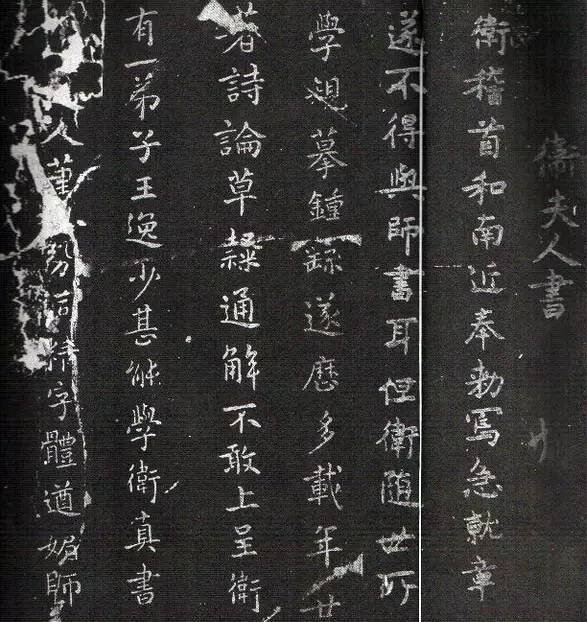
Mrs. Wei's "Urgent Message"
Wei Shuo (272-349), a famous calligrapher, also known as Mrs. Wei, with the courtesy name Maoyi, was a native of Anyi, Hedong (now north of Xia County, Shanxi). He was a famous calligrapher in the Jin Dynasty and the first calligraphy teacher of Wang Xizhi. He wrote "Bi" Array Diagram".
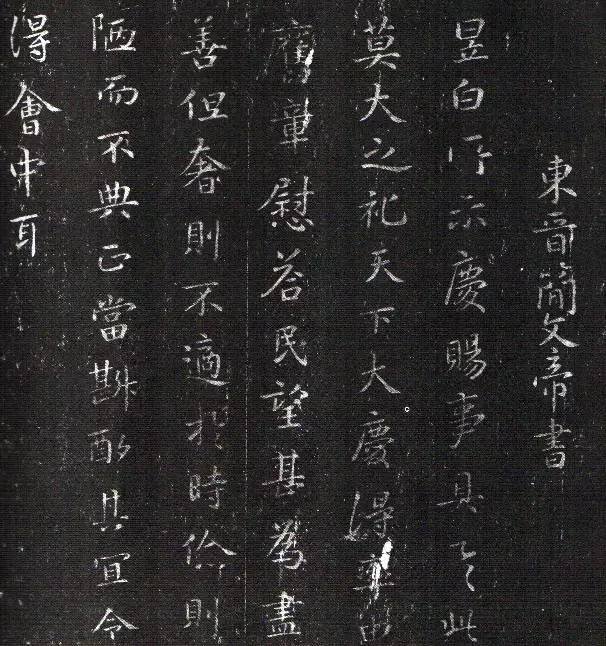
Sima Yu's "Celebrating Gifts"
Emperor Taizong Jianwen of the Jin Dynasty Sima Yu (320-372), whose courtesy name was Daowan. The youngest son of Emperor Sima Rui of Jin Yuan Dynasty and the eighth emperor of the Eastern Jin Dynasty. He served as an official in the seven dynasties of Yuan, Ming, Cheng, Kang, Mu, Ai, and the deposed emperors. He was first granted the title of King of Langya, and later moved to the title of King of Kuaiji. He successively held the posts of Changshi of Sanqi, General of the Right, and General of the Fujun. Good at calligraphy and metaphysics.
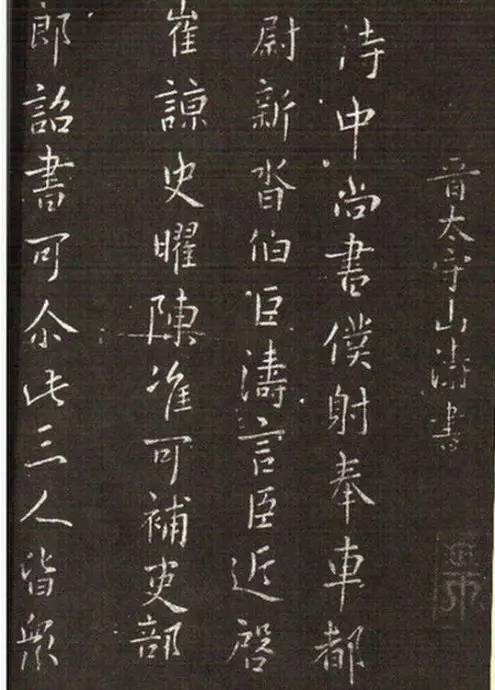
Shan Tao's "Shi Zhong Tie"
Shan Tao (205-283), courtesy name Juyuan. Henan people. A celebrity and statesman during the Cao, Wei and Western Jin Dynasties of the Three Kingdoms, he was one of the "Seven Sages of the Bamboo Grove". He was orphaned early and his family was poor. Hao Laozhuang Xue Shuo, at the age of forty, became the princess's secretary. Shan Tao saw Sima Yi and Cao Shuang fighting for power, so he hid himself and ignored the affairs.
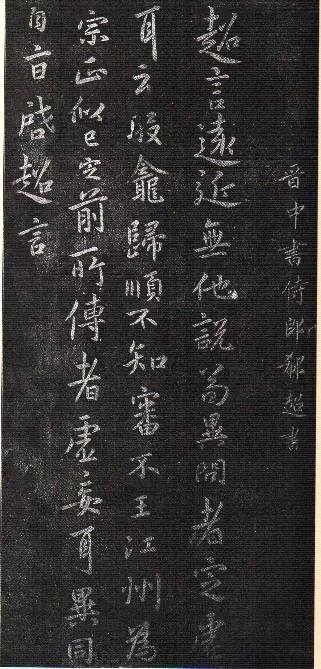
Xi Chao's "Far and Near Tie"
Xi Chao (336-378), whose courtesy name was Jingxing, whose first name was Jingyu, whose diminutive name was Jijie, was born in Shandong. He was an official, calligrapher and Buddhist scholar of the Eastern Jin Dynasty. He was the grandson of Taiwei Xi Jian and the son of Xi Min, the internal historian of Kuaiji.
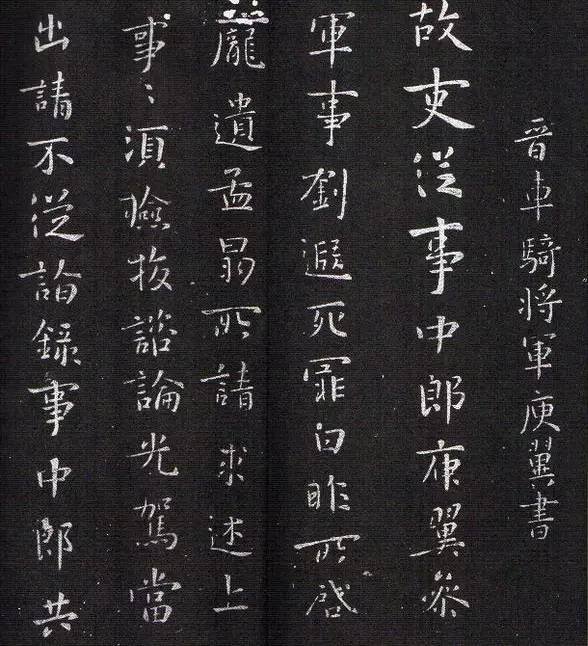
Hu Ji's "Old Officials' Notes"
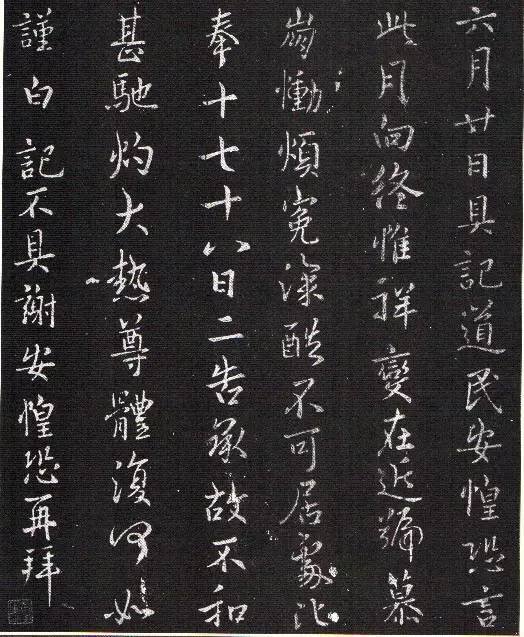
Xie An's "June Post"
Xie An (320-October 12, 385), whose courtesy name was Anshi. A native of Taikang, Henan. A famous politician, military strategist, writer, and calligrapher in the Eastern Jin Dynasty, he was the son of Taichang Xie Pa and the disciple of General Xie Shang of Zhenxi. He is less famous for his free talk and is a good friend of Wang Xi, the sage of calligraphy. Politically, he contributed to the national stability of the Eastern Jin Dynasty.
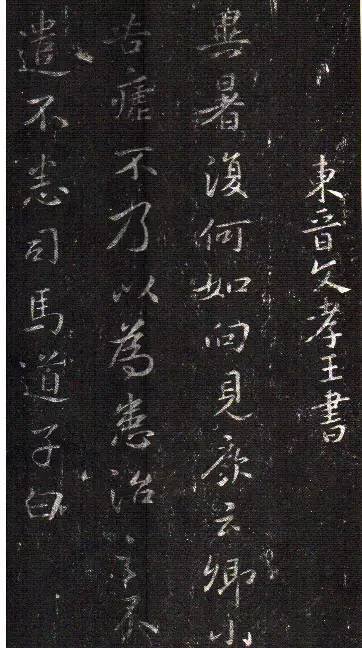
Sima Daozi's "Exotic Summer Post"
Sima Daozi (364-February 3, 403), courtesy name Daozi, was a native of Wen County, Hanoi. Clan and powerful officials in the late Eastern Jin Dynasty. The seventh son of Sima Yu, Emperor Wen of Jin Dynasty, and the same mother and brother of Sima Yao, Emperor Xiaowu of Jin Dynasty. His mother was Li Lingrong. He was first granted the title of King of Langxie, and later he was granted the title of King of Kuaiji. He has rich family knowledge and is good at literature and calligraphy.
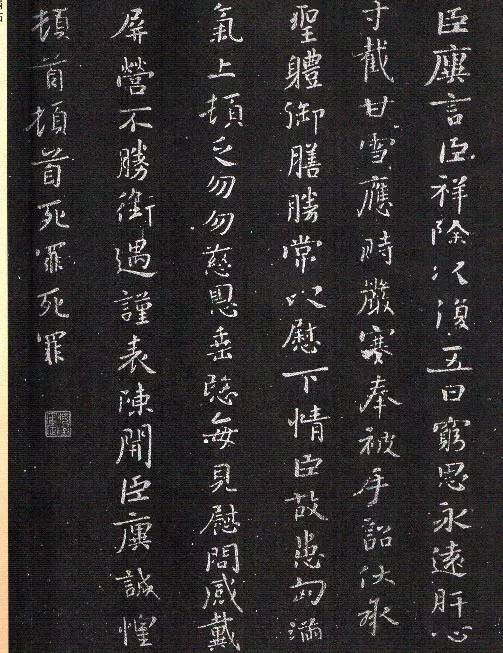
Wang Xian's "Xiangchu Tie"
Wang Yu (yì) (276-322), courtesy name Shijiang. Shandong people. He was a famous calligrapher, painter, writer, and musician in the Eastern Jin Dynasty. He was the younger brother of Prime Minister Wang Dao and General Wang Dun, the aunt of Emperor Sima Rui of Jin Yuan Dynasty, and the uncle of the "Sage of Calligraphy" Wang Xizhi.
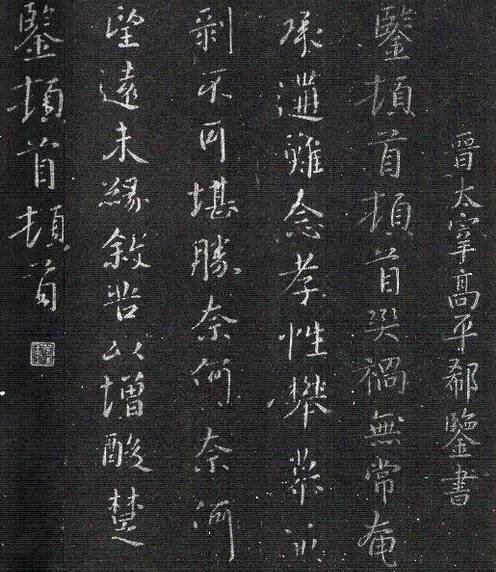
Xi Jian's "Disaster Post"
Xi (xī)jian (269-339), whose courtesy name was Daohui. A native of Jinxiang, Shandong. He was a calligrapher and general in the Eastern Jin Dynasty and the great-great-grandson of Xi Lu, the imperial censor of the Eastern Han Dynasty. He was lonely and poor when he was young, but he was well-read in classics, devoted himself to farming and chanting, and was famous for his purity and elegance.

